.
.
.
photo by Francis Wolff, courtesy of Mosaic Records
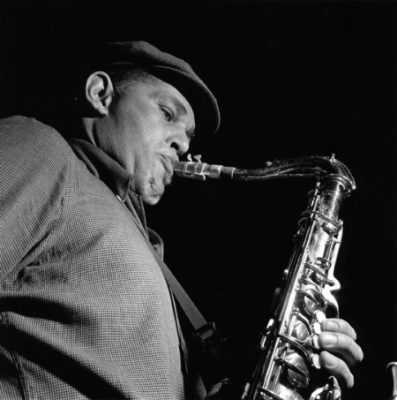
_____
.
Dexter Gordon’s musical career has long been recognized and celebrated. As a young saxophonist, he held important chairs in the orchestras of Lionel Hampton, Fletcher Henderson, Louis Armstrong and Billy Eckstine, and, in the late 1940’s, was a groundbreaking force in Los Angeles’ Central Avenue jazz scene. His extensive recording career included albums on Savoy, Dial and, most famously, Blue Note, where, from 1961 to 1964, he made seven landmark records that are among the most revered of the hard bop era. While most were recorded in New York, some were made in Europe, where Gordon lived and worked from 1962 to 1976, when he returned to the United States permanently, becoming a Columbia Records artist as well as an Academy Award nominated “best actor” for his role in the 1986 film Round Midnight.
While Gordon became the picture of the hip jazz musician — as portrayed in Herman Leonard’s iconic 1948 photo that is the definition of “cool” — in Sophisticated Giant: The Life and Legacy of Dexter Gordon, author Maxine Gordon writes that this image of her late husband “fails to come to terms with a three-dimensional figure full of humor and wisdom, a man who struggled to reconcile being both a creative outsider who broke the rules and a comforting insider who was a son, father, husband, and world citizen.” Among Dexter’s struggles included the events of the entire decade of the 1950’s that he preferred not to divulge, as well as an intimate mid-1960’s friendship in Denmark that ended in tragedy.
Ms. Gordon’s book, begun in 1987 when Dexter was still alive, fills in these gaps within Dexter’s biography while reminding us of his essential and charismatic creative spirit. In a February 8, 2019 telephone interview with Jerry Jazz Musician editor/publisher Joe Maita, Ms. Gordon discusses the complex life of this important and honored American artist.
.
.
(This post is published with gratitude to Ms. Gordon and her publisher University of California Press, as well as to Michael Cuscuna and Mosaic Records for granting permission to use the photos of Dexter Gordon by Blue Note Records co-founder Francis Wolff that appear periodically in the interview, and within the photo gallery at its conclusion. I also wish to acknowledge the poet Michael L. Newell, whose poem “Joyous Evening with the Blues” is published with his permission).
.
.
_____
.
.
photo by Francis Wolff, courtesy of Mosaic Records
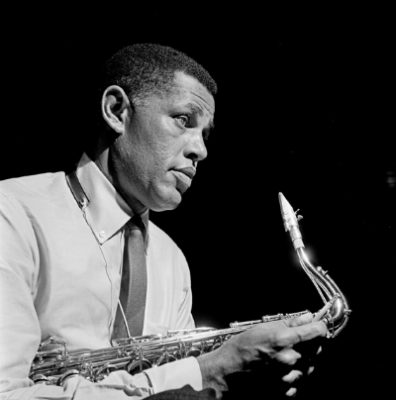
.
“When digging to uncover a hidden past, one comes upon a life in the form of fragments. This book is a jazz composition that gratefully gives the bandstand over to different voices to play their tunes, and lovingly pushes against Dexter’s inclination to turn away from the uncomfortable. But it does not lose sight of what is most crucial in this story — an individual voice and its determination to assert itself in a world too often arrayed against it.”
– Maxine Gordon
.
Listen to “I Guess I’ll Hang My Tears Out to Dry”
.
_____
.
JJM .Your book on your late husband Dexter Gordon is important, and so much of the story is your love for him. The publication of Sophisticated Giant is a fulfillment of a promise you made to him shortly before his death – that you would complete his biography. What do you remember about the conversations you had with Dexter about completing this book?
MG . Well, I remember everything about it. While we were living in Cuernavaca, Mexico, he began writing his autobiography long hand on yellow pads, and would then give me what he wrote, which were mostly vignettes – he didn’t write in a lineal, chronological way. These were stories about different periods in his life, and about different people. I would then type them up on an Olivetti portable typewriter, even using carbon paper. He would look it over and make notes about what he wanted to add, or other ideas, and then he would go on to something else. He would write every day, not always complete stories, but often just notes to himself. Just as he practiced his saxophone every day, he worked on the book every day.
Then, at a certain point I told him that it would be easier if he made an outline, but he said that he didn’t want to do that, that it would be boring, and that he just wanted to improvise. I argued that having an outline would make it more organized, which he felt was pretty silly, but I won the argument, so he started to make an outline. Then he moved through the sections – the early family history, Los Angeles, his time with Lionel Hampton, and when he got to 1948, he skipped ahead to 1960. He left out the entire decade of the 1950’s. He didn’t want to talk about it or think about those years. The 1950’s were very difficult years for him, with his drug use and incarceration, but I argued that you can’t leave a decade out of your book! He said that it was his life, and that yes, he could leave those years out. “If you want it in the damn book, write it yourself,” he told me. So, he knew that I probably would, but it took a long time and a lot of research.
JJM .How much of this history of the 1950’s did you know about before writing the book?
MG .Very little, because he never talked about it. I knew things, for example, that they made the movie Unchained in Chino Prison, and I knew he was in Chino because he talked about how he took part in group therapy there, and would at times recommend that people go to group therapy because he went and it was a good thing. It was in group therapy at Chino that he said is when he found out he wasn’t a drug “addict,” that he was a drug “user.” This problem was affecting other people, but he learned how to not feel like he was a criminal for being a “user” of drugs.
I also knew he was in Unchained. He is in a scene with the Chino band, and he would joke about how he wasn’t on the film’s soundtrack because when you were in prison you couldn’t be in the musician’s union. So he is seen but not heard in the film – he is overdubbed by the tenor player Georgie Auld, and from that came a recurring joke of his about “getting Georgie Auld” to do a gig he preferred not playing. When he made the movie Awakenings with Robert De Niro, he made that joke because Auld played on the soundtrack of the film New York, New York, dubbing in for De Niro on saxophone. So I knew that much about the 1950’s, and he also told me that the minute he was off parole he would never want to go back to Los Angeles. What he remembered was very negative.
JJM . So you had quite a bit of research to do about that decade. You said that much of what you leaned on was his discography and prison records…
MG .Yes, and Hadley Caliman.
JJM .Who was he and how did he help you?
MG . He was a tenor player who was ten years younger than Dexter and was called “Little Dex.” He played like Dexter, and he wanted to be Dexter, but Dexter warned him, “Don’t be like me.” He fell into difficulty and was in Chino Prison with Dexter, so he is a firsthand account of that experience. When I told him that Dexter wanted me to leave that era of his life out, he said that the story needed to be told, that people need to know what they went through, what was done to drug users in the 1950’s, and how it was not a criminal offense then, it was a health code offense. He advised me to look that up, and also told me who else was locked up. There were something like ten tenor players who were called “Little Dex,” and a lot of them had the same problems. People were so helpful – one person would lead me to another – and they wanted me to finish the book. Jimmy Heath told me that the reason he lived past 90 is because it took me so long to write the book! He was very helpful, and Sonny Rollins said “Oh, I hope you get it right.”
JJM .You and Dexter shared a love of reading, and you each traveled with your own copy of James Baldwin’s Go Tell it on the Mountain. What was it about this book that you both loved so much?
MG . It was as if Baldwin already knew what was going to happen, like he foreshadowed what is happening now. Dexter and I agreed with everything he would say. He had such a way of writing about Harlem and the people that he became our griot, our inspiration. I have this photo of Baldwin in Istanbul that I would look at every day and say, “Ok, would you write my book? Tell me how to do this?” Because if you read Baldwin, which I do, you know there is nothing you can do better than he already has. When Dexter and I were working on the book, he said that somebody he would ask for help from would be James Baldwin. “Go Tell it on the Mountain.” Well, go tell a story that you will remember, because that was the idea, that people would read his story and be able to relate to it, and then be able to see the bigger picture about the Black cultural history he lived in – not just, “First he played with this band, then he played with that band.” I didn’t want that to be the book.
JJM .What is your favorite jazz biography?
MG . Space is the Place, the Sun Ra book by John Szwed. Another one is Sidney Bechet’s Treat It Gentle, which is a great book. I also like the Hampton Hawes autobiography Raise Up Off Me. Those are great books, as are all of the Louis Armstrong books that he wrote about New Orleans.
JJM .In many ways, Dexter is best remembered as the iconic jazz musician in the 1948 Herman Leonard photograph. How did he feel about that photo? Did the two of you talk about that much?
copyright Herman Leonard Photography, LLC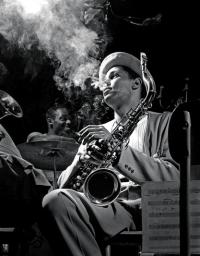
Herman Leonard’s 1948 photograph of Dexter Gordon
MG .Herman was a very good friend of Dexter’s, and mine as well after Dexter died. I visited him in New Orleans to celebrate his 80th birthday in early 2003 and while there I looked at all of his great photographs. We talked about him taking that photo of Dexter and whether he knew it would become such an iconic, successful photograph, and he told me, “I had no idea.”
He said the photo was taken during a rehearsal at the Royal Roost, and during rehearsal he could bring his lights and light the room, whereas you couldn’t do that during a gig, when it is difficult to see anything. He eventually made quite some money from that photo as it became the iconic jazz photo, but he told me one day that he wasn’t sure we should sell it anymore because he didn’t want to encourage young people to smoke. They were going to think smoking was so cool. So, he “photo-shopped” the smoke from the photograph, but called me to say that without the smoke the photo is nothing! He put the smoke back in, but he jokingly wanted to have a disclaimer on the photo that said, “This photo does not encourage young people to smoke!”
JJM .There is another story in your book I didn’t know about that really surprised and touched me, and that concerns Dexter’s Danish girlfriend Lotte Nielsen…
MG . I didn’t know that story either…
JJM .So, just to set this up a bit. Lotte and Dexter were in a relationship in Copenhagen in the 1960’s, eventually breaking up toward the end of 1966. When Dexter returned to Copenhagen in June of 1967, he visited her in the hospital on June 11, and she died the next day, according to the Danish National Archives, of a brain hemorrhage. You wrote that “on June 16, as Dexter was performing at Jazzhus Montmarte, Lotte’s father stormed into the club brandishing a gun and threatened to kill Dexter, blaming him for Lotte’s death.” He never shared any of this with you?
MG He never mentioned it. I asked him once about who the short girl was in a photograph taken of them behind the club, and he just said she was a friend from Copenhagen. There is just something about that photograph, where everyone looked so happy. I asked Dexter’s very good friend from Denmark, “Skip” Malone, about who the girl in the photo is, and all he said was, “Leave that alone. Walk away.” I thought that was very odd. Of course, I didn’t leave it alone, and asked other friends of his, including a friend named Klaus who told me it was Dexter’s girlfriend, but it had a tragic ending.
Then, while I was investigating how Dexter got arrested in 1966 – which I found out about in the Paris library while looking through old copies of the New York Herald Tribune for articles on Dexter – I came across these pictures of the same girl from Denmark, and Dexter wrote letters during that time from her address. It was like uncovering a mystery. So, I kept doing what I do, nagging and researching. I asked the producer of a documentary made in Copenhagen about Dexter and Ben Webster if he could get into the government archives for Dexter’s papers, which he was able to, and he shared them with me. So, that is how I wrote that section.
JJM .Was this a painful experience for you to discover and write about?
MG . No. I had the idea about how to write the book, and this story had to be told.
JJM .This book is such a personal and revealing story about Dexter, but it also includes you and your own experiences. Did you have your own challenges with revealing your own personal details?
MG . No. I guess I should, right? I do historical research. I study Black cultural history. I was always looking at him as an example of somebody that was a Black artist born in 1923. What was that like? What was it like for his family? What was it like to spend 14 years in Europe? Writing about him, I was always thinking about writing the bigger story around him, not isolate him or me as the main characters. There are a lot of people in the story, right?
JJM .And you entered the story right before the time Dexter came back to the States. What was your role in that?
The 1977 album Homecoming, recorded at the Village Vanguard, Dec. 1976
Listen to “Fenja”
MG .I met him in France, when I was a road manager for an agent in Holland, and when I met him and we began to talk about him coming back to the States he already had the idea of coming back. He wanted to come back, he just wasn’t sure how to do it, so we worked out an idea of how he could do it, which took about six months of planning. I knew Max Gordon of the Village Vanguard and a couple of other people, but I had never been a manager, I was just a road manager. The idea was that he would try it, and if it worked he would consider coming back, and if it didn’t he had a house in Denmark, and a bicycle and a job. He could always work. So, it was a trial run, but it went very well, and then he moved back.
JJM .Some ten years or so after his return, the record executive Bruce Lundvall suggested Dexter for a role in the film that became Round Midnight. Was Dexter at all skeptical about this film, or this role?
MG .No. That’s not how he was. He was skeptical that he would be paid. As a musician he would say, “Oh, you know, I have heard this before. This isn’t the first time someone said he would make a movie about a jazz musician, but don’t spend the money yet because it doesn’t always happen.” But as it proceeded, he felt it began looking as if was going to happen. He wasn’t a person that was skeptical – that sounds negative. He was very positive about stuff. Plus, he had other things to do – it wasn’t as if making the movie was part of his plan, but once it started happening, he became more interested and agreed to do it.
JJM .Did the film’s producers have any concern about casting Dexter in that role?
MG .Irwin Winkler was the producer, and he had done the Rocky movies, so he was concerned with the budget, and with Warner Brothers backing it. They had insurance for the stars of the movie, and he had concerns if they went over budget, which it didn’t. Dexter assured him that the musicians could do this, and he worked on the casting – he wanted Bobby Hutcherson, Pierre Michelot, Wayne Shorter, and Billy Higgins. The director worked with him, the producer was great. Everything was great.
JJM .While you say he wasn’t skeptical about this film project, he surely had enough bad experiences with being burned by executives in the record industry, that one could understand if he was…
MG .Yes, well, he didn’t dwell on that. He just felt, well, that’s the way they are. That’s how it goes. He wasn’t someone to bring up names from the past. He let that go. He didn’t hold a grudge.
Louis Armstrong sings “Ain’t Misbehavin’” from the movie Atlantic City. Dexter Gordon is also in the film, and can be seen in the front row of the saxophone section (to the viewer’s left)
JJM . His resume, in terms of great people he played with, is endless. Unfortunately we don’t have enough time to go over every one, but the one I do want to ask you about is Louis Armstrong, who he played with from May through November, 1944. I can’t help but think of what the conversation must have been like when Dexter told Armstrong that he was leaving to go play more “modern music” with Billy Eckstine. Did he share that conversation with you, and how Armstrong responded?
MG .He always repeated that, and you can read it in many interviews where he told him that he had to go play this “modern music.” Armstrong understood and told him if it doesn’t work out, you will always have a job and you can come back. He felt that trying to portray Armstrong as being negative about bebop because he said something once in an interview about it being “noise” doesn’t mean that is what he thought or believed all the time. So he was totally positive about Louis. He loved Louis Armstrong.
JJM . What do you miss most about Dexter?
MG . He is not that far away. I never speak about a friend or a jazz musician in the past tense because they are always with me. So, I kind of feel like he is always there and since I am on the road with the book, every day I present a slide show with his photos and music. So, I miss his physical presence, but he is always very present.
.
.
___
.
.
photo by Francis Wolff, courtesy of Mosaic Records
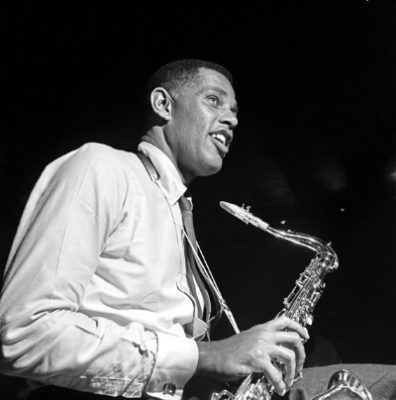
“He loved being a jazz musician, and although his life was complicated with some very dark, very low moments, he was not a man to burden himself with regrets. In fact, Dexter was not even sorry to run out of time before he could finish his book, probably because he knew I would. No, [Dexter] left this world a very contented man. When asked if he had any regrets, he replied, “Only one. I never got to play in the Count Basie band — in Lester Young’s chair.”
– Maxine Gordon
.
.
_______
.
.
JOYOUS EVENING WITH THE BLUES
Dexter Gordon blew blue
blue notes for hours in his visit
to my CD player,
accompanied by wicked syncopations
rapped on window and roof
by bursts of rain as it came and went
and returned again, as Mr. Gordon
and the Junior Mance Trio entranced
Montreux back in 1970, along
with me and my two friends
silently nodding in (more or less) time
to music from over forty-five years ago
and icy rain in the here and now;
we spent time consuming “Fried Bananas,”
dreaming of a “Sophisticated Lady,”
bouncing and dancing in chairs and on sofa
to “Rhythm-a-Ning,” slow swaying
to “Body and Soul,” tears in our eyes,
rediscovering the essence of the blues
in “Blue Monk,” and bopping out
freely and wildly around the room
in response to “The Panther.”
When the CD concert ended, we all
smiled and silently went our various ways,
and the rain continued a slow serenade,
as if it too had been taken on a journey
that led to a joyous copious weeping.
.
.
.
_______
.
.
A Dexter Gordon Photo Gallery
Select photos of Dexter Gordon by Francis Wolff, co-founder of Blue Note Records
.
Published with the generous consent of Michael Cuscuna and Mosaic Records
Quotes that accompany each photograph are excerpted from Sophisticated Giant: The Life and Legacy of Dexter Gordon, by Maxine Gordon
.
.
photo by Francis Wolff, courtesy of Mosaic Records
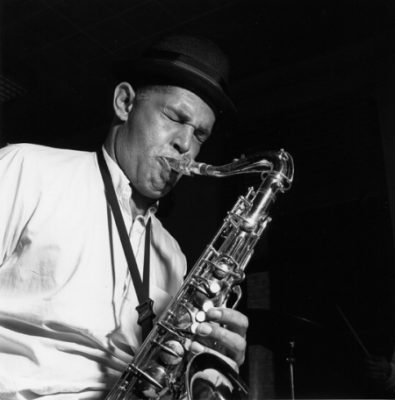
“What was it about Dexter? Well, besides his music, he was sort of the bridge between Charlie Parker on the alto and what became possible on the tenor saxophone. Dexter’s playing was always an amalgam, to me, of everything that came before, of course. But he was also that bridge — so a lot of the guys that were getting into bebop at that time, they all liked Dexter. He wasn’t doing what Charlie Parker was doing, no. You know, he didn’t play Charlie Parker on tenor; he played Dexter Gordon on tenor. But he was playing music that had the same qualities, really.”
– Sonny Rollins
.
.
photo by Francis Wolff, courtesy of Mosaic Records
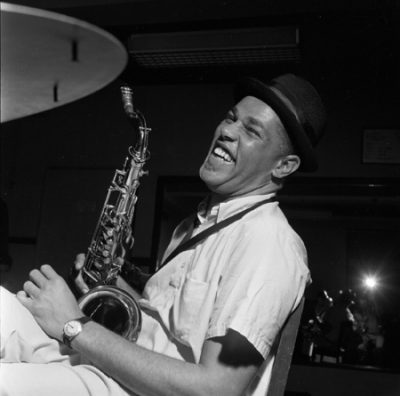
“When Dexter walked into a room, he did not go unnoticed. It wasn’t only his height, good looks, and wardrobe — people were drawn to his charm and flair.”
-Maxine Gordon
.
.
photo by Francis Wolff, courtesy of Mosaic Records
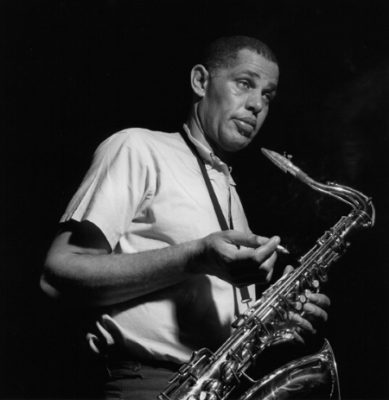
“Dexter talked often about the fight for survival, climbing out of the holes he had fallen into, the fight to play music and be recognized as an artist, the fight to refuse to go into any place by the back door.”
-Maxine Gordon
.
.
photo by Francis Wolff, courtesy of Mosaic Records
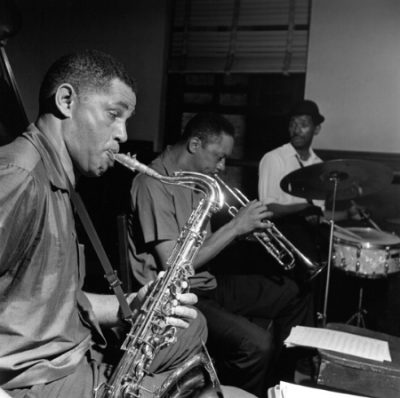
“Arriving on the scene just as the new phenomenon of recorded sound was mixing with the cultural explosions that were jazz and then bebop, and the growing vibrancy and confidence of an emerging and demanding group of young Black radicals, Dexter and so many contemporaries made themselves heard like none that had been heard before, bringing joy, hope, and fulfillment through their voices — musical, political, racial, cultural.”
-Maxine Gordon
.
.
photo by Francis Wolff, courtesy of Mosaic Records
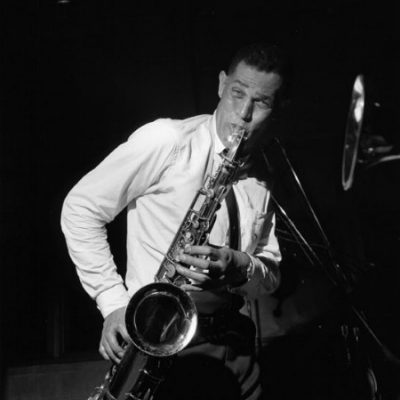
“What was so interesting about Dexter is the way he played swing. He could really swing. He was a hard-swinging musician. From the musical standpoint, Dexter played kind of behind the beat, and this is a comfortable way to swing. He’s not real nervous. He played in the pocket, right in the pocket, and groove, and that’s what was so good about him.”
-Jimmy Heath
.
.
photo by Francis Wolff, courtesy of Mosaic Records
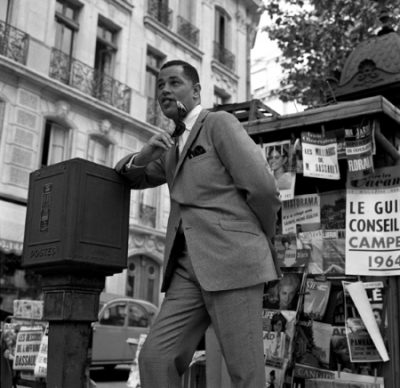
“Dexter…made you see yourself a little clearer and always did so with wit (sometimes a biting wit; every now and then the humor was a knife turning).”
-Maxine Gordon
.
.
photo by Francis Wolff, courtesy of Mosaic Records
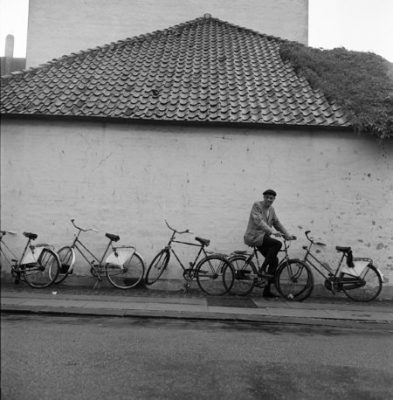
“The years Dexter lived in Europe — in 1962 to 1976 — are treated as ‘lost’ years by many fans, friends, and critics. Those Europe years were when he went missing from the scene in the United States, which many believed to be not only the center of jazz at that time, but also the center of the world and anything interesting that was happening in it.”
-Maxine Gordon
.
.
photo by Francis Wolff, courtesy of Mosaic Records
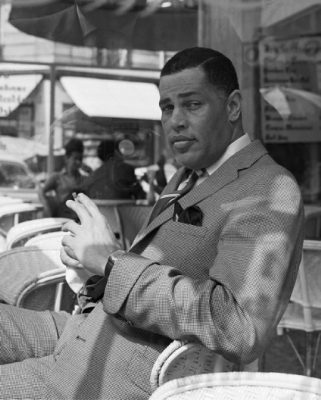
“The joy of playing music and being in the company of each other and of loving fans makes for an exciting and fulfilling life on the bandstand, but as Dexter said later in his life, it is those times off the bandstand that can be very tough.”
-Maxine Gordon
.
.
photo by Francis Wolff, courtesy of Mosaic Records

“He did everything wrong and it all turned out right.”
-Dizzy Gillespie
.
.
photo by Francis Wolff, courtesy of Mosaic Records
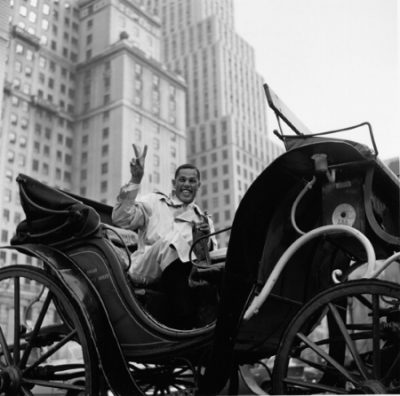
“When Dexter played, everybody listened. He could really power you off the stage if you were up there with him. Long Tall Dexter. He will never be forgotten.”
-Jimmy Heath
.
.
.
_____
.
.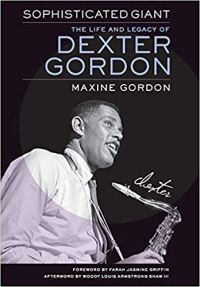
Sophisticated Giant: The Life and Legacy of Dexter Gordon
by Maxine Gordon
.
.
This telephone interview took place on February 8, 2019, and was hosted and produced by Jerry Jazz Musician editor/publisher Joe Maita. With gratitude to the author for making herself available, and to University of California Press, and also to Michael Cuscuna of Mosaic Records for granting permission to use the photographs of Francis Wolff
.
.
Michael L. Newell is a retired English/Theatre teacher who currently lives on the Oregon coast after living abroad for many years. His most recent book is Meditation of an Old Man Standing on a Bridge from Bellowing Ark Press in Seattle.
.
.
.
.




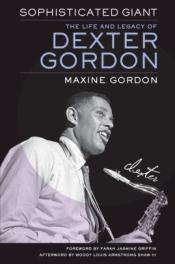

























I’ve been seeking out every bit of information I can find after seeing “Round Midnight. DG is fascinating and compelling in so many respects and I am going to explore his music in depth. His tone evokes his experience and personality in a unique way beyond the contribution to jazz. But basically, it’s the jazz that captures me, as with every other musician I love.
I spent quite a bit of time in Cuernavaca but probably not overlapping with his and Maxine’s time there. Too bad. Such a beautiful interesting place.